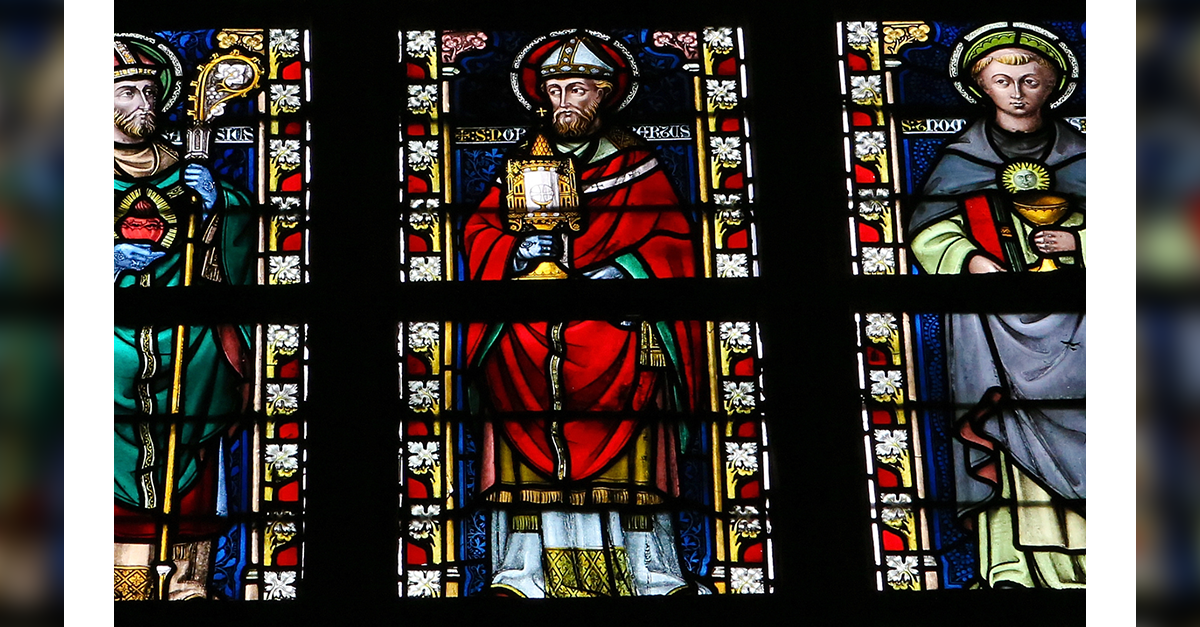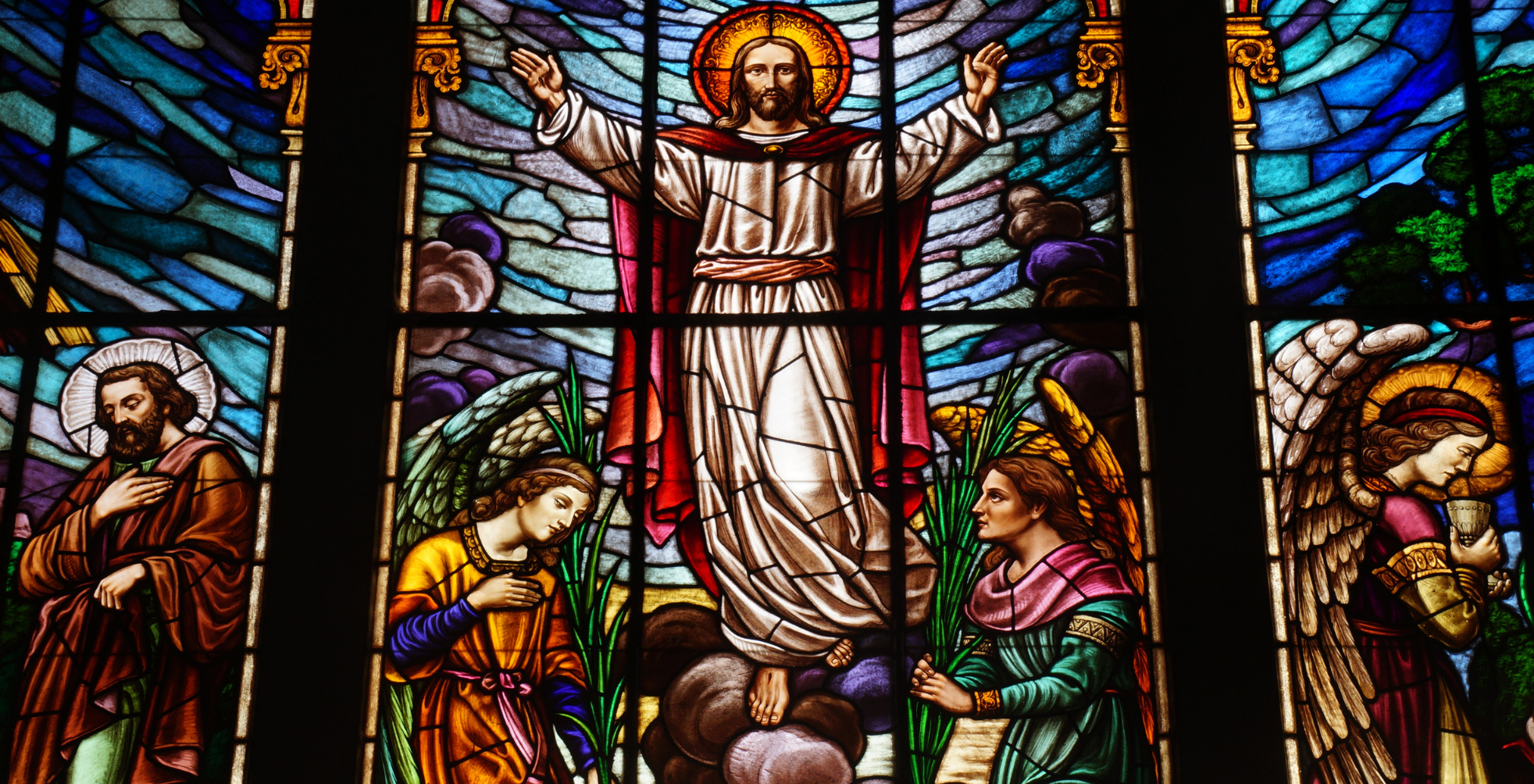Celebrating Catholic Schools Week at Home: The Value of a Catholic Homeschool Education
Catholic Schools Week, celebrated every year from the last Sunday in January through the following Saturday, honors the impact and value of Catholic...
4 min read

Catholic families can celebrate All Saints’ Day and honor saints year-round through prayer, stories, art, and service that inspire everyday holiness at home.
For Catholic families, faith shapes the rhythm of prayer, learning, and daily family life. Celebrating the saints, holy men and women who faithfully followed Jesus and now share in eternal life in heaven, gives Catholic parents a meaningful way to inspire their children and help them grow in understanding the call to holiness.
The Church teaches that all Christians are called to be saints. Saints are people in heaven, whether officially canonized or not, who lived lives full of love, courage, and virtue, offered themselves for others, or remained faithful through hardship. They are examples of how ordinary people can follow Jesus in extraordinary ways.
All Saints’ Day, observed each year on November 1, is a special reminder of this universal call to holiness. It is a time for Catholic families to celebrate the saints, remember the call to live faithfully, and draw inspiration from their lives. This article explores the Church’s teaching on the saints and offers practical ideas for honoring them at home—on All Saints’ Day, and throughout the year.
In the Catholic tradition, a saint is any person who has lived a life of holiness on earth and now enjoys eternal life with God in heaven. Saints include well-known figures like St. Francis of Assisi or St. Thérèse of Lisieux, as well as countless people whose names we may never know. What makes them saints is their love for God, their courage, and the way they followed Jesus in their everyday lives.
The Church teaches that all Christians are called to be saints. Those in heaven, whether officially canonized or not, are saints because they lived heroically virtuous lives, offered themselves in love for others, or remained faithful even in difficult times. They are role models who show children and families that holiness is possible for everyone, in every time and place.
Saints remind us that ordinary people—parents, children, neighbors, teachers, and friends—can do extraordinary things when they trust God and live with love. Learning about their lives helps children see that following Jesus is not just for adults, priests, or people long ago, but for everyone in the family today.
Catholics honor the saints for two main reasons:
Witness of Holiness: Saints are role models whose lives show us how to follow Jesus in everyday life. Their acts of love, courage, and faithfulness remind children and adults alike that it’s possible to live a holy life.
Intercession: Catholics believe that saints, already in heaven, continue to care for us on earth. Just as we might ask a friend or family member to pray for us, we can ask the saints to pray for us too.
Honoring saints is never worship. Instead, celebrating saints helps families feel part of the larger Communion of Saints, connected across time and space, all loving and serving God together.
All Saints’ Day, or the Solemnity of All Saints, is celebrated on November 1. It is a Holy Day of Obligation, which means Catholics are called to attend Mass. The day honors all saints, known and unknown, who now live with God in heaven.
All Saints’ Day is more than a day to attend Mass. It’s a special chance for families to grow closer in faith and to help children understand that sainthood is a calling for everyone. Celebrating together reminds children that holiness is not just for adults or people from long ago. Instead, it’s something each of us can live out in our homes, schools, and communities every day.
Start the day by attending Mass as a family. You may also want to gather the family for a prayer service at home. Talk about the Communion of Saints and pray for each other’s intentions.
Invite each family member to dress as their favorite saint. Each participant can share one thing about their saint’s life, helping everyone learn about the different ways people have followed Jesus. Bonus if you expand your parade to include other families so you can learn even more about saints from others’ participation.
Together, choose and research a saint whose life connects to your family’s own interest. Older children can independently learn about saints while younger children can make saint holy cards, drawings, or simple posters to display around the house.
Art: Make saint holy cards or paper “stained-glass” windows with saint images.
Music: Sing hymns such as For All the Saints.
Storytelling: Read saint biographies aloud, highlighting examples of courage, kindness, and love of God.
Families can celebrate by doing small acts of service. Collect food or clothing for those in need, volunteer together for a cause you all care about, or help a neighbor, in honor of saints like St. Vincent de Paul or St. Teresa of Calcutta.
Celebrating All Saints’ Day is just the beginning. The lives of saints can inspire families every day, showing that faith can be lived in countless ways, in homes, schools, and communities.
Religion Lessons: Highlight a “Saint of the Month” connected to virtues or liturgical feasts.
History and Social Studies: Explore saints who shaped culture, like St. Thomas More or St. Joan of Arc.
Science: Introduce patron saints of science and medicine, such as St. Albert the Great or St. Gianna Beretta Molla.
Language Arts: Read saint biographies and encourage children to reflect, draw, or write about what they learned.
Virtue Charts or Rewards: Recognize children when they demonstrate qualities like kindness, courage, or generosity.
Prayer Corner or Home Shrine: Dedicate a space for the “Saint of the Month” with a short biography, image, and prayer.
Patron Saint Connections: Encourage children to choose a patron saint and regularly ask for their intercession.
A saint’s feast day is the day the Church sets aside to honor and celebrate their life, witness, and entrance into eternal life with God. Families can pray together, read a story, or complete a small activity to keep the saints’ example present in daily life.
The saints show us that holiness is possible for everyone. All Saints’ Day gives families a wonderful opportunity to celebrate the Communion of Saints, honor holy role models, and encourage children to live lives of faith, hope, and love. By observing the feast with prayer, stories, art, music, and small acts of service, and by keeping the saints’ stories alive throughout the year, Catholic families can help children grow in faith, be inspired by the saints, and follow Jesus in their own unique and holy ways.


Catholic Schools Week, celebrated every year from the last Sunday in January through the following Saturday, honors the impact and value of Catholic...

Advent is a sacred season of waiting and wonder. Over these four weeks, the Church invites families to prepare their hearts for Christ’s coming....

Catholic families can celebrate All Saints’ Day and honor saints year-round through prayer, stories, art, and service that inspire everyday holiness...